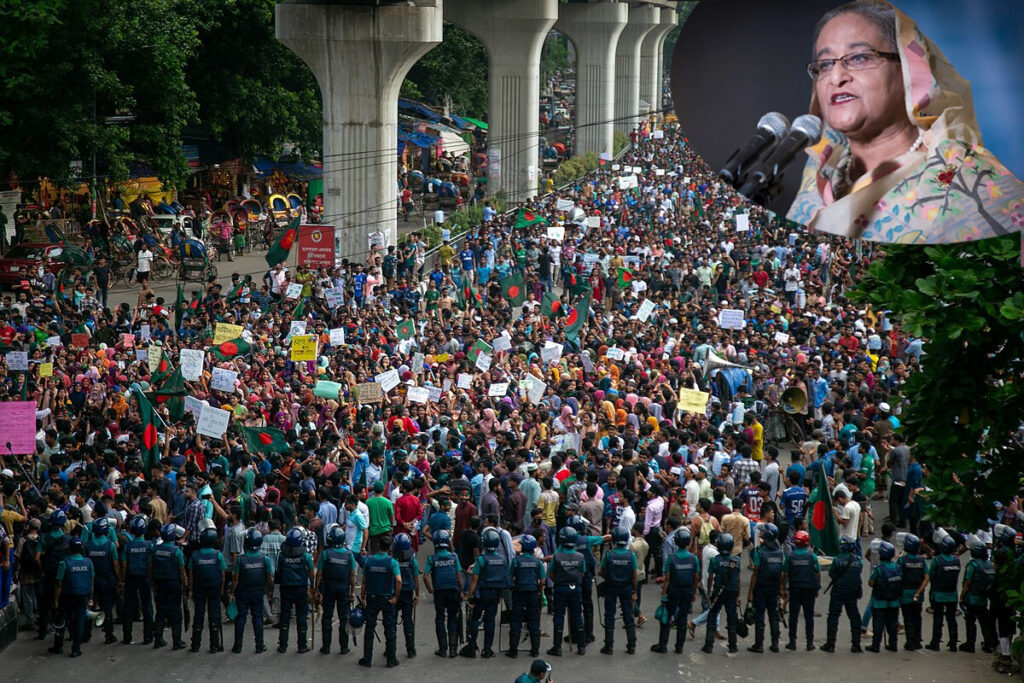A United Nations (UN) report has claimed that crimes against humanity were committed during the violent protests in Bangladesh last year. The UN accused Sheikh Hasina’s government of using brutal force to suppress demonstrations. The report states that Bangladeshi security forces, intelligence agencies, and members of Hasina’s Awami League party were allegedly involved in attacks against protesters to maintain control over the government.
Background of the Protests
The protests began in July 2024 over the abolition of job reservations in government employment. However, they soon escalated into a nationwide movement demanding the removal of Prime Minister Sheikh Hasina from power. By August 2024, the protests had turned violent, forcing Hasina to flee to India for safety.
During the unrest, demonstrators set fire to her residence and vandalized statues of her father, Sheikh Mujibur Rahman, the founder of Bangladesh. The government responded with extreme measures, leading to mass casualties.
Key Findings of the UN Report
The report, based on over 230 interviews with victims, witnesses, opposition leaders, and human rights experts, outlines the following:
1. Mass Killings and Shootings
- 1,400 protesters were killed, including 12-13% children.
- Security forces deliberately shot unarmed civilians, leading to either death or lifelong disabilities.
- Bangladesh’s interim government had estimated 834 deaths, but the UN report claims the number was much higher.
2. Torture, Arbitrary Detention, and Violence Against Protesters
- Children were arbitrarily arrested, detained in inhumane conditions, and subjected to torture.
- Women were threatened with rape to prevent them from joining protests.
- Many protesters were imprisoned without trial and subjected to severe torture.
3. Organized Strategy to Retain Power
- The Bangladeshi military, police, and intelligence services worked together to suppress protests violently.
- The UN has “reasonable grounds” to believe that crimes such as murder, torture, illegal imprisonment, and other inhumane acts were committed.
UN Human Rights Chief’s Statement
The UN High Commissioner for Human Rights, Volker Türk, described the crackdown as a “systematic and well-organized strategy” by the Hasina government to stay in power despite mass opposition.
This report has intensified international scrutiny of Bangladesh’s political and human rights situation. However, Bangladesh’s interim government has denied many of these allegations, claiming that the violence was incited by opposition groups.

